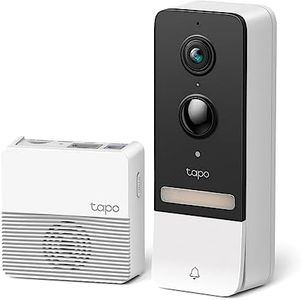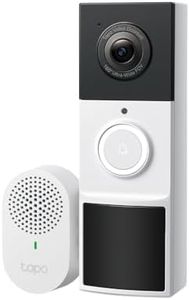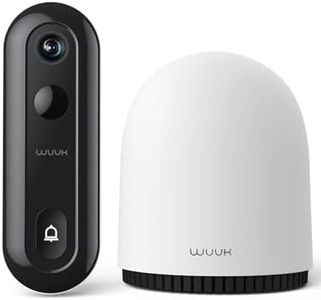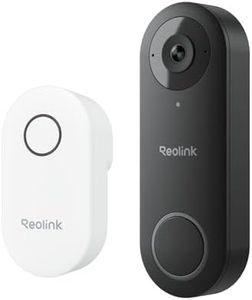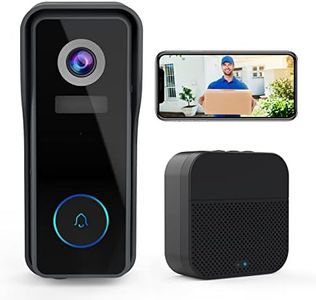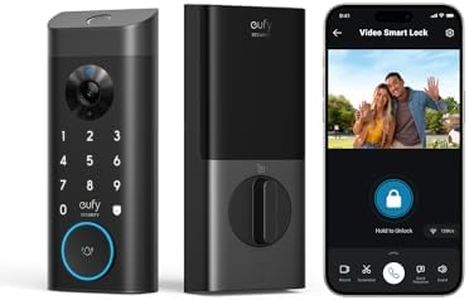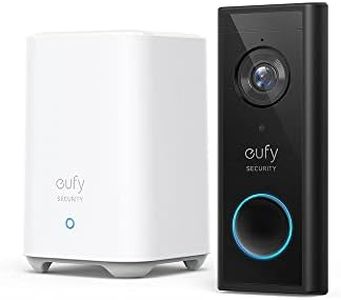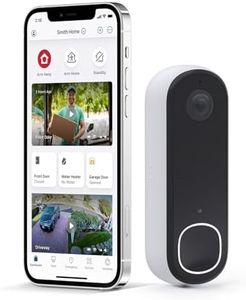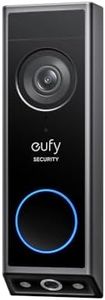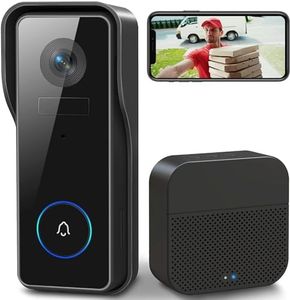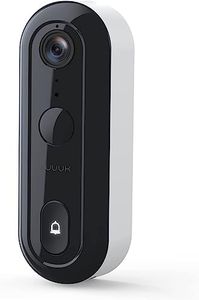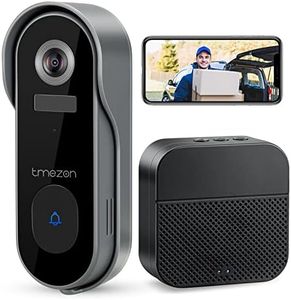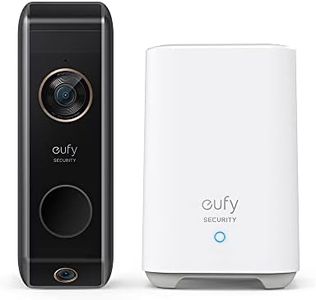We Use CookiesWe use cookies to enhance the security, performance,
functionality and for analytical and promotional activities. By continuing to browse this site you
are agreeing to our privacy policy
10 Best Doorbell Cameras Without Subscription
From leading brands and best sellers available on the web.Buying Guide for the Best Doorbell Cameras Without Subscription
Choosing a doorbell camera without a subscription means you'll want to focus on features that allow for full usage without ongoing fees. Typically, no-subscription models store footage locally or let you access live video and alerts without extra costs. Understanding your needs—such as whether you prioritize video quality, easy installation, or strong app support—will help you navigate the many options out there. Start by surveying your home's entryway, thinking about network accessibility (Wi-Fi), mounting needs, and privacy preferences. Each specification plays a role in your experience, so knowing how they matter will guide you toward the best fit.Video Storage MethodThis spec defines where the footage your doorbell camera captures is stored. The two main options here are local storage (such as an SD card in the camera itself) and cloud storage. For cameras without subscriptions, local storage is crucial because it means you can review your video history without paying for an online service. The capacity of the local storage can vary, with some allowing for just a few days and others weeks of video. Consider how frequently you’ll check footage—if you want to save historical clips, look for higher-capacity or loop-recording features.
Video ResolutionThis is the clarity of the video image your camera provides, often measured in pixels like 720p, 1080p, or even 2K and above. Higher resolution means sharper images, making it easier to identify faces or packages. However, high-resolution footage takes up more storage space. If your doorway is well-lit and you want clear images for identification, go for at least 1080p. For basic motion checking, 720p might be enough. Consider your desire for detail versus the available storage the camera offers.
Motion Detection and AlertsMotion detection determines if you’ll get notified when someone approaches your door. Some cameras offer simple motion detection, alerting you to any movement, while advanced models can distinguish between people, animals, and cars. If you live on a busy street, look for adjustable motion zones and sensitivity settings to avoid false alerts. Your goal is to pick a system that offers timely, relevant notifications tailored to your home's environment.
Power SourceDoorbell cameras can be wired to your existing doorbell wiring or powered by batteries. Wired models offer continuous power but require installation where wiring is available. Battery-powered units are easier to install and can go anywhere but need periodic recharging. Pick a power source based on your comfort with installation and willingness to recharge or replace batteries; for renters or frequent movers, battery models are more flexible.
Field of ViewField of view refers to how wide an area the camera can capture, measured in degrees. A wider field (like 160° or more) means you’ll see more of your porch and surroundings, which helps catch activity just out of frame. Too wide, however, can distort the image. If your entrance has a broad approach or you want to monitor multiple angles, choose a wide field. For narrow corridors, a smaller field suffices.
App and Local FeaturesThe companion app lets you view live footage, receive alerts, and review saved clips. With no subscription, it's key that the app offers full functionality—like saving and sharing recordings—from local storage. Check if you can access the camera remotely and if features like two-way audio or quick-response messages are allowed without extra fees. Prioritize user-friendly apps with clear controls that suit your smartphone use habits.
Night VisionNight vision ensures your camera works in low light or darkness, typically using infrared LEDs to illuminate the scene. Quality varies: basic models offer grayscale images, while enhanced night vision provides clearer, sometimes color images. If your entryway is poorly lit, focus on strong night vision capabilities to ensure round-the-clock security.
Weather ResistanceSince doorbell cameras are installed outside, they need to withstand rain, snow, heat, and dust. Weather resistance is usually measured with an IP rating (in the form of IP65, IP66, etc.), indicating protection against water and particles. If your camera will be exposed to the elements, pick a higher-rated, weather-resistant model. For sheltered areas, standard resistance may be adequate.
